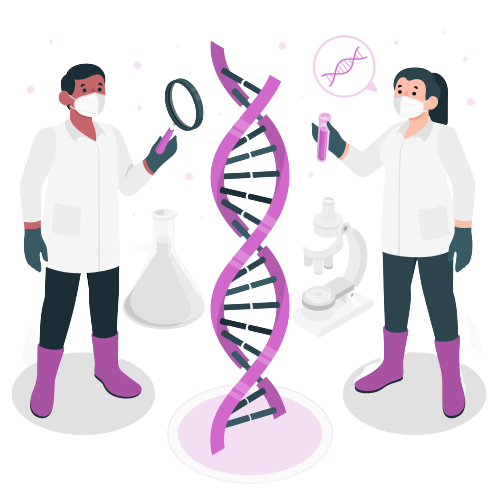Preimplantation Genetic Testing

Aneuploidy (PGT-A), formerly known as preimplantation genetic screening (PGS), is a technology used during in vitro fertilization to assess the chromosomal pattern of embryos before they are transferred to the uterus. PGT-A helps identify embryos with any chromosomal abnormality so that embryos only with the correct number of chromosomes, which can increase the chances of a successful pregnancy and reduce the risk of certain genetic disorders, be transferred into the womb.
key points:
1. Aim: PGT-A aims to select embryos with a normal chromosomal complement for embryo transfer, increasing the chances of a successful pregnancy outcome and reducing the risk of chromosomal (genetic) abnormalities. PGT-A is primarily used to screen embryos for an abnormal number/pattern of chromosomes. Aneuploidy can lead to implantation failure, abortions, or birth of a child with a chromosomal disorder the most common being Down syndrome..
2. Technique: Embryos are obtained through IVF. After fertilization, the embryos develop until they reach the blastocyst stage in 5-6 days in the lab, then a few cells are biopsied from each blastocyst. The biopsied cells contain genetic material that is analyzed to determine the chromosomal status of each embryo.
3. Genetic Analysis: The biopsied cells are sent to a specialized laboratory where the genetic material is tested using techniques such as next-generation sequencing (NGS) or array comparative genomic hybridization (aCGH). These techniques can determine the presence or absence of specific chromosomes or chromosomal segments which allows the identification of abnormal embryos.
4. Embryo selection: after testing the embryos are labeled as either euploid (having a normal chromosomal complement) or aneuploid (having an abnormal chromosomal complement). The euploid embryos are considered more likely to implant and result in a successful pregnancy. Typically, only euploid embryos are selected for transfer to the uterus.
5. Benefits: the selected euploid embryos have increased chances of successful implantation and reduced risk of miscarriage due to chromosomal abnormalities. It can also help individuals or couples who may be at higher risk of transmitting certain genetic disorders, allowing them to select embryos free from those specific conditions.
6. Limitations: it has certain limitations.
- It does not guarantee a successful pregnancy, as there are certain factors other than chromosomal abnormalities that can affect implantation and pregnancy outcomes.
- False-positive or false-negative results are also possible due to technical limitations or genetic mosaicism (presence of both normal and abnormal cells within an embryo).
- PGT-A also cannot detect all genetic disorders, as it primarily focuses on chromosomal abnormalities rather than specific gene mutations.
It's important to note that PGT-A is a complex technique and should be done only by trained professionals in specialized laboratories. The decision to undergo PGT-A should be made in consultation with infertility specialists, genetic counselors, and other healthcare professionals who can provide guidance based on specific conditions, medical history, and personal preferences.
More Services
How can we help you?
Contact us at the Consulting WP office nearest to you or submit a business inquiry online.


